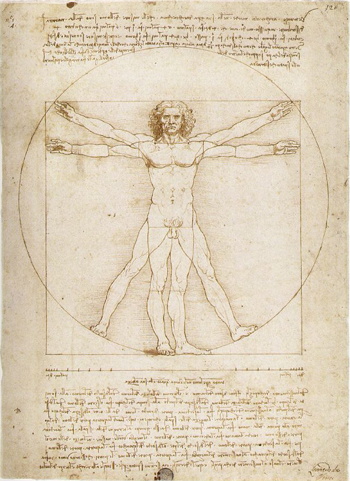| Search Art Prints | ||||||||||||||||||||
| Search Artists | ||||||||||||||||||||

|
||||||||||||||||||||
|
|
|||||||||||||||||||

Vitruvian Manalso known as Study of proportions

|
In 15th century Italy, the circle was considered an ideal shape for church and town plans. Roman philosophers associated the circle with divinity and the perfection of God, and also took interest in the recurrence of round structures in nature. The fascination with the circle, and with the philosophy of the architect Vitruvius, certainly influenced Leonardo da Vinci's Vitruvian Man.
Vitruvius was a first century Roman architect who wrote a treatise called 'De Architectura'. In this treatise, he emphasized the importance of symmetry and the circle in architecture and related architectural harmony and human balance. Vitruvius thought that with symmetry, a temple would reflect and relate to the parts found in a human body.
Da Vinci's Vitruvian Man, drawn in pen ink, illustrates one of Vitruvius' observations. Vitruvius noted that if a man extends his four limbs so that his hands and feet touch the circumference of a circle, his navel will fall in the exact centre of the circle. Da Vinci's drawing illustrates this fact and also includes a square within the circle whose sides are touched by the head, feet and outstretched arms of the subject. With this drawing, Da Vinci promotes a connection between the body and architecture as well as demonstrating the perfection of the circle as connected to the human form.
Vitruvian Man is an important work because it reflects the ideas of its time. It clearly demonstrates the enthusiasm for Vitruvius among Renaissance architects in Italy and promotes their interest in the circle as an ideal form. It is certain that da Vinci followed these principles when designing his own architectural plans for churches.











